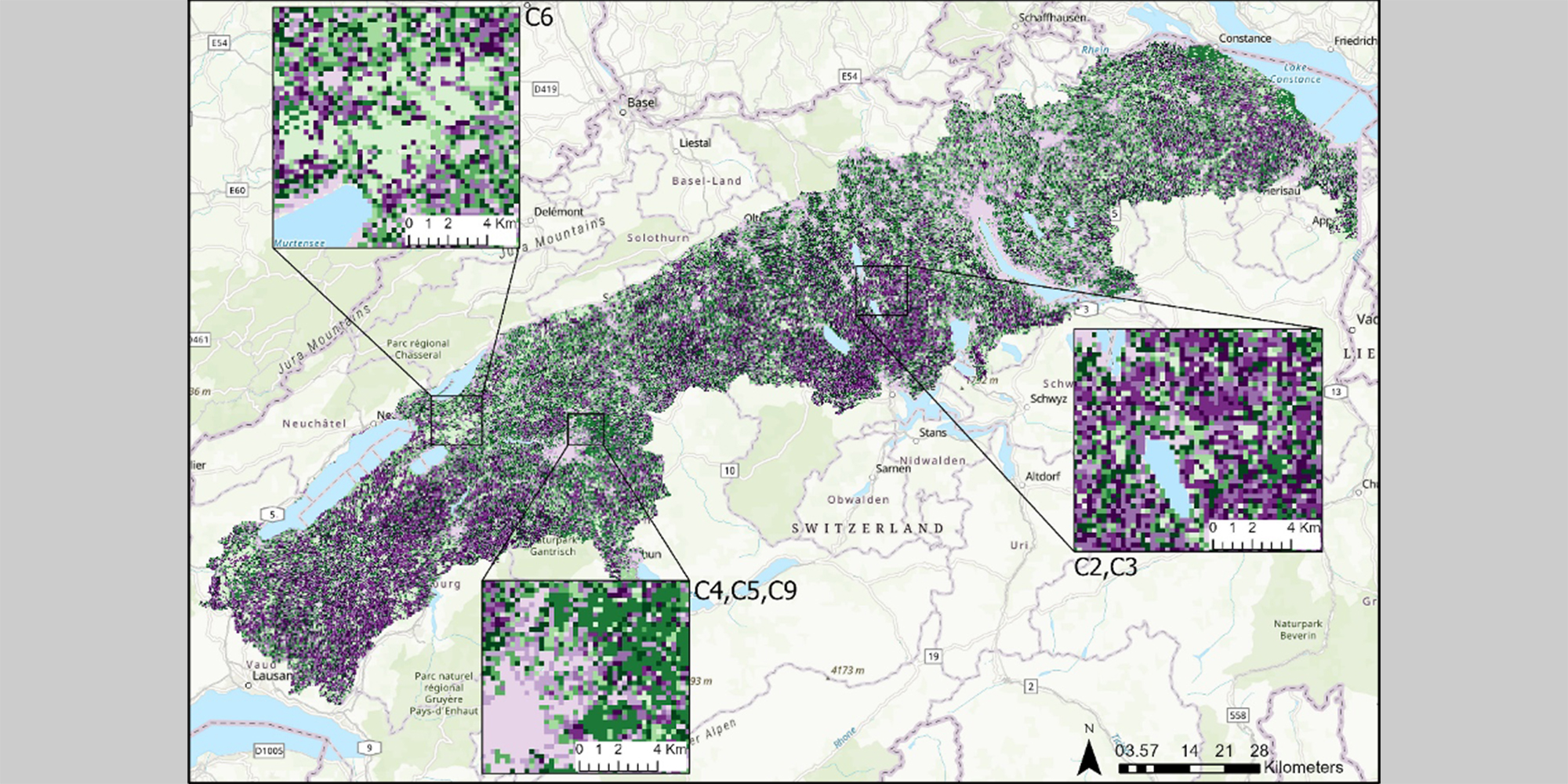New Publication in Landscape Ecology – Rethinking Habitat Availability Across Time and Space

Why History Matters for Conservation
Conservation often focuses on current habitat conditions, but species don’t always respond immediately to landscape changes. Instead, they can exhibit time-lagged responses—where past landscape configurations better explain present-day species occurrences than contemporary landscapes. A new study from the Swiss Plateau explores how more than a century of landscape change has shaped current biodiversity patterns by identifying temporal habitat availability change clusters and showing how these overlap with current species occurrences.
AHA – A New Way to Measure Habitat Availability
To capture these dynamics, researchers introduced the Amount of Habitat Available (AHA) metric. Unlike traditional approaches, AHA includes the impact of landscape configuration by assessing how easily species can move across a landscape—factoring in real-world barriers like roads and buildings. Using time-series analysis from 1899 to 2012, they found that AHA in 1933 best predicted today’s species presences. They also identified that time-series trajectories that show a higher past AHA overlap with areas of high landscape quality, as indicated by the presence of indicator species.
Implications for Planning and Policy
The findings have major implications: ignoring historical habitat availability risks overlooking possible biodiversity declines. By integrating temporal habitat availability into planning, conservationists can identify areas where species persist despite degradation—and where restoration could be most effective. Because AHA is broadly applicable, it offers a versatile tool for landscape planning across both urban and rural areas.
Access the paper here: external page https://doi.org/10.1007/s10980-025-02124-x